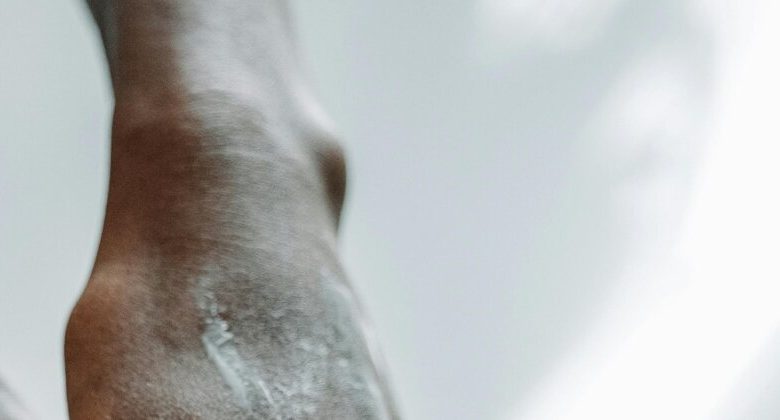Common Foot Issues (and How to Get Rid of Them)

The last thing you need to be dealing with as you are navigating the four elements of negligence is a foot problem, but stressful times like this are when you’re most at risk of them. You’ll find yourself rushing more due to anxiety or time constraints which will lead you to getting hurt more often or forgetting to take safety precautions.
The result can be anything from a painful infection to excessive itchiness thanks to Athlete’s foot. Whether you’re looking to treat one of these ailments or prevent them from happening altogether, you’ll likely find the following information helpful.
Calluses and Corns
If you’ve ever looked at the bottoms of your feet and seen hardened patches of skin on the sole and heel then you’ve seen calluses. If these same patches are small and located on or around the toes, they may instead be corns. Assuming that they are in fact corns or calluses and not hardened skin hiding warts then the treatment to remove them is the same.
You can start by soaking your feet in warm water for about twenty minutes. The warmth will relax your feet while the water softens up the unwanted hardened skin. If there is any pain associated with them, this may also help soothe the area and alleviate it a bit. After you’ve dried your feet, you can use either a large nail file or a pumice stone to scrape the excess skin away.
Be careful if you do this because you could harm healthy skin if your hand slips. If at any point you feel pain or see bleeding, stop immediately and consider a doctor’s appointment. You may have disturbed an old injury, wart or other foot problem that needs to be seen and treated by an expert.
Preventing calluses and corns may seem simple, but bear in mind that these are your body’s way of protecting your feet. Because of this, even the most vigilant may still see calluses form sometimes. If you want to try and prevent them, then wear well-fitting shoes and socks, avoid walking barefoot on hard or rough surfaces and consult with your doctor if they get really bad really quickly. This is sometimes how your body reacts to an underlying condition that needs further treatment.
Athlete’s Foot
Athlete’s foot is a very common fungal infection that usually starts on the feet. The first signs that you have a problem are that the skin is cracking and bleeding, discolored and itchy, and usually incredibly itchy. Luckily, it’s common enough that there are many over-the-counter treatments you can pick up from your local pharmacy to try.
Whether you decide to use a cream, spray or powder, keep in mind that they’ll take time to work and not all medications will work for you. Keep trying until you find one that successfully kicks the fungus away.
During your treatment, you need to be careful to try and not spread the fungus. It is not only highly contagious to those around you; it’s also highly contagious to the rest of your body. For example, if you scratch an infected patch of skin on your foot it may spread to your hand.
It can get to all kinds of other places from here, from your legs and arms to your chest or even face. This is also why you’re told to use a separate towel to dry your feet. You should also wash your feet more often than usual and keep your feet quarantined in a pair of socks until you’re sure the fungus is completely gone.
Ingrown Toenails
If you’ve ever looked down at your sore toe only to find the edges red and swollen then you know how painful and uncomfortable ingrown toenails are. The condition is incredibly common in many people due to its wide range of causes. Everything from wearing shoes and socks that are too tight to simply being genetically prone to them can cause this excruciating malady.
What happens is the pressure of your shoe, rounded nail edges or consistent foot injury lead the nail to grow into the skin on the sides of the toe. The results are obvious and sometimes kind of gross: pain, swelling, infection and puss. Luckily, it can be treated without a doctor’s help if you catch it early enough.
Soaking your feet in warm water that has Epsom salt dissolved in it twice a day will not only relax your muscles and soothe the wound, it will also soften up the toenail and skin which can make it easier to do whatever else you need to. For example, you can gently lift the nail near where you think it is ingrown to check for pressure.
Do this gently to avoid further injury. If you feel pain, see puss or notice significant pressure, then gently place something like dental floss underneath the nail to encourage it to grow correctly. If the aim is too much, take pain relievers and wear roomy shoes like sandals to give your toe the space to breathe. If it gets to be unbearable, take it to a doctor to see what they recommend.
Plantar Wart
If you’ve ever been told to wear flip-flops or sandals around some public areas like locker rooms or showers, it’s because you could get plantar warts if you don’t. They’re caused by HPV (human papillomavirus) that, much like molds and fungi, grows and festers in warm, moist environments. If you come into contact with the virus, you’ll have a wart in no time.
These warts are sensitive and painful and typically appear like bumps with black dots inside. How your warts are treated will vary from case to case, since some grow inward or may clear up on their own.
Most of the time, though, you’ll end up using salicylic acid pads or sticks to wear them away, cryo treatment to freeze them off, wart medications like creams or even just outright cutting them off. If you have a wart, then you may be able to use some over-the-counter solutions like wart creams or bandages to help remove them.
Many people immediately turn to home remedies as well for a variety of reasons. Feel free to try them so long as they don’t tell you to cut the wart off yourself. This is best left to a doctor and their sterilized tools.




